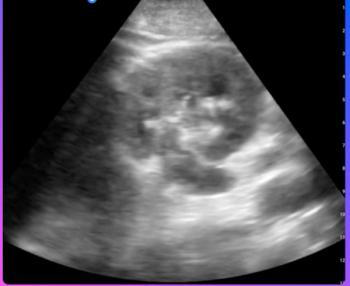
Structured reporting system brings consistency, streamlines tasks
Despite advances in radiology, the ultimate product -- the radiology report -- remains largely unchanged. Radiologists typically issue narrative descriptions of findings after image analysis, a labor-intensive and sometimes error-prone process.
Despite advances in radiology, the ultimate product - the radiology report - remains largely unchanged. Radiologists typically issue narrative descriptions of findings after image analysis, a labor-intensive and sometimes error-prone process.
Radiologists are often inconsistent in their reporting methods, according to Dr. David Vining, an associate professor of abdominal imaging at Wake Forest University Baptist Medical Center.
Serial monitoring of cancer images, for instance, is important when treating cancer patients. While radiologists generally report the size of an "index lesion" on an imaging study and compare it across serial exams, some report changes as "increased" versus "decreased," and others state specific dimensions, making precise disease time lines elusive, Vining said.
Nor has PACS solved the problem. Most PACS allow annotation of digital images with symbols such as arrows and text, but they do not automate the reporting process or organize diagnostic findings.
To rectify this deficiency, Vining has created a structured reporting system that standardizes the process of disease monitoring by presenting a visual time line in all radiology reports. The system, a nexus of RIS, HIS, and PACS, was featured in an infoRAD exhibit at the RSNA meeting last November.
The system's report format and database structure allow a radiologist to track diagnostic findings across serial examinations and various imaging modalities, yielding more exact disease time lines and better patient management, Vining said.
"This appears to be a concept and a practical tool that may benefit not only practicing radiologists but patients as well," said Steve Drew, RSNA's assistant executive director of scientific assembly and informatics.
Vining's system (called REX, for "radiology express") mimics a natural workflow pattern: the radiologist points at an image and describes "where" and "what" is identified. With the structured system, however, diagnostic codes are presented to the radiologist using comprehensive pull-down menus or voice-activated commands. Upon selection, these are automatically added to a database, a Web-based structure accessible instantly from anywhere over the Internet.
The system also promotes reduced malpractice risk, data mining, and faster billing. Usually, reimbursement for radiology services requires proper matching of CPT and ICD-9 CM codes, a task that requires trained clerical workers to decipher radiologists' narrative reports and verify proper billing code assignments. Since REX relies on proper matching of CPT and ICD-9 billing codes before image interpretation, electronic billing can occur as soon as a report is approved by the radiologist, Vining said.
While not yet a commercial venture, the idea has attracted widespread industry attention, and a commercial product will likely debut at the next RSNA meeting.
"We are negotiating with several industry partners," Vining said.
Newsletter
Stay at the forefront of radiology with the Diagnostic Imaging newsletter, delivering the latest news, clinical insights, and imaging advancements for today’s radiologists.




























